Understanding Anemometers for Surfing Performance
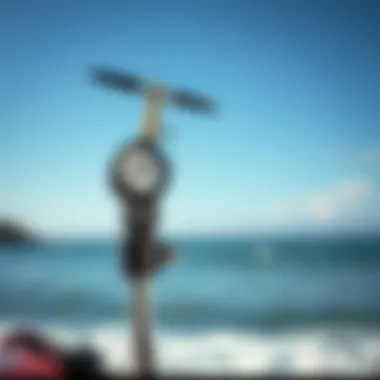
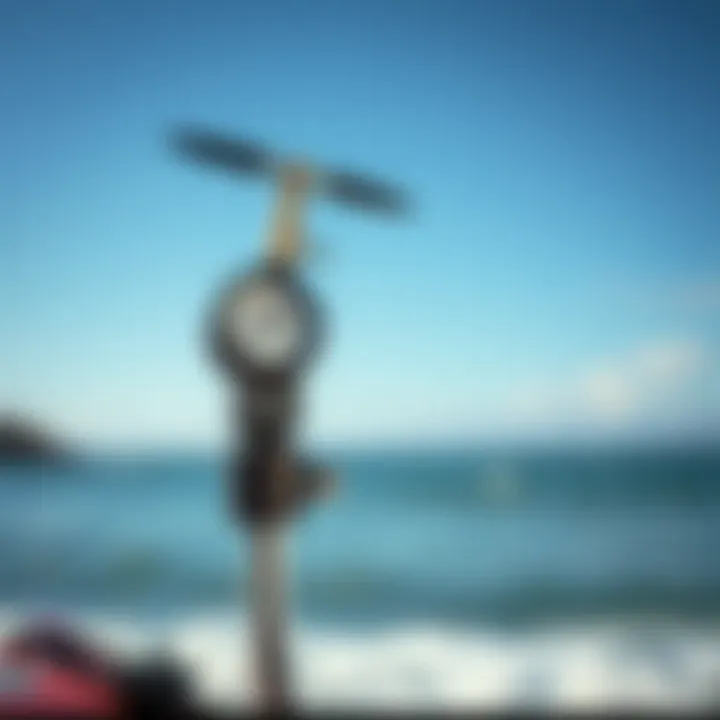
Intro
Wind plays a critical role in the life of surfers. It shapes the waves, influences the weather, and even impacts the very experience of gliding over the water's surface. For those who spend their lives riding the waves, understanding how wind acts is as crucial as the water itself. This is where anemometers come into play. Anemometers are sophisticated devices designed to measure wind speed and direction, empowering surfers to make informed decisions based on current conditions.
Before we dive deep into how these instruments function and their significance for surfers, it's essential to grasp the basics of wind dynamics and the pivotal role these measurements play in maintaining safety and enhancing performance on the water. From choosing the right surf spot to mastering techniques on varying wave conditions, having an accurate understanding of wind conditions can make all the difference.
So, grab your board and let’s navigate through the layers of knowledge to enhance both our appreciation of surfing and ability to ride those waves effectively.
Surfing Techniques
Mastering the Basics
When first starting out, every surfer must come to grips with the core techniques that define the sport. According to seasoned surfers, the ocean is the ultimate teacher. Yet, what most don’t realize is that understanding the wind is equally vital. Anemometers help surfers know when conditions favor their level of mastery.
- Paddling: The wind affects the current and the wave formation. Understanding which way the wind blows can help you pick the right moment to paddle.
- Timing: Surfers often find themselves waiting for the perfect wave. Wind conditions directly influence the waves’ swell and break, guiding the surfer on when to take their chance.
An anemometer, like a speed sensor, provides crucial insight. For beginners, checking wind conditions can drastically change a session's outcome. A light offshore breeze may create glassy waves, while a strong onshore wind can chop them up, making it a struggle to catch a decent ride.
Advanced Maneuvers
As surfers progress, they begin to explore advanced techniques that require enhanced control and understanding of the wave dynamics shaped by the wind.
When performing tricks or riding powerful waves, a surfer’s awareness of the wind can play a considerable role. For instance:
- Cutbacks and Floater Moves: Stronger winds can alter the wave’s structure, which might require adjustments in technique. Surfers should be familiar with their anemometer to know if they’re dealing with turbulent conditions that might necessitate a more conservative approach.
- Aerials: An understanding of wind direction is vital. If the wind is blowing in the right direction, it can launch the surfer higher into the air while also aiding their landing. The right wind can make a daring aerial maneuver just a tad easier to pull off.
In situations where surfers are vying for the ultimate stoke, knowledge gained from wind measurements—accessed via anemometers—can truly elevate their skills. Riders can harness this knowledge to further enhance their prowess in exploring new moves.
Surfing Lifestyle
Sustainable Surfing Practices
Surfing isn’t just about the waves; it's also about responsible engagement with the environment. Surfers committed to sustainability are becoming more aware of how wind patterns can influence not only wave conditions but coastal ecosystems.
- Choosing eco-friendly boards and clothing while being conscious of surf breaks is crucial.
- Winds participate in shaping these ecosystems and help maintain the water quality surfers thrive in. Thus, understanding these intricacies can forge a more mindful connection with the ocean.
Surf Culture Around the World
Surfing is no longer just a pastime but a global culture. Each region has its own unique characteristics influenced by local wind patterns, be it the glassy coast of California or the powerful breaks of Hawaii.
In summary, the art of surfing weaves together technique, lifestyle, and environmental awareness, with anemometers standing at the intersection. Surfers who take the time to understand wind dynamics will find that it not only enhances their performance but also deepens their connection to the ocean.
"Without wind, there would be no waves; without waves, there would be no surf."
For more detailed information on this, check out resources like Wikipedia's page on Anemometers and surf-related forums on Reddit.
Ultimately, becoming adept in surfing means recognizing that the whole experience goes beyond riding waves. It's about cultivating knowledge, respect, and craft—elements that start with understanding the very air that fills the sails of our joy.
Intro to Anemometers
In today’s world, where every wave counts, understanding wind measurement can be the key to a surfer's success on the water. Anemometers are not just technical gadgets; they are lifelines for surfers who wish to ride the perfect wave. These instruments gauge wind speed and direction, which can greatly influence surfing conditions. While anemometers may seem secondary to the thrill of surfing, they are, in fact, essential tools for both amateurs and professionals alike.
Imagine trying to catch the perfect swell without understanding the winds that shape it. Poor wind conditions can lead to choppy waters or quickly deteriorating surf, whereas the right wind can create ideal waves, transforming a day on the beach into an exhilarating experience.
In this section, we will explore two key aspects of anemometers: their definition and significance in the surfing community, as well as a brief dive into their historical development. Knowing how these tools evolved can enhance appreciation for their role in surfing and beyond.
Definition and Importance
An anemometer is a device designed to measure wind speed and direction. It plays a crucial role in various fields, from meteorology to aviation, but for surfers, it holds a unique significance. The ability to measure wind accurately means that a surfer can make informed decisions, improving safety and performance while out on the water.
When wind speed is measured, surfers can predict wave conditions. For instance, a sudden increase in wind speed can signal that conditions are about to change rapidly, perhaps leading to rougher seas. Knowledge is power in surfing; the right information could mean the difference between having an enjoyable session and facing a daunting challenge.
A good anemometer provides data that can help surfers understand more than just wind conditions – it implies insights into local weather patterns, tidal movements, and even surf predictions. This device allows surfers to embrace their passion with confidence, knowing they are making decisions based on real-time data rather than guesswork.
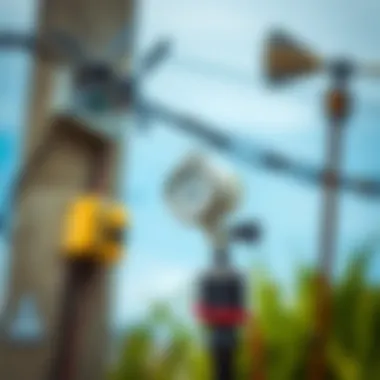
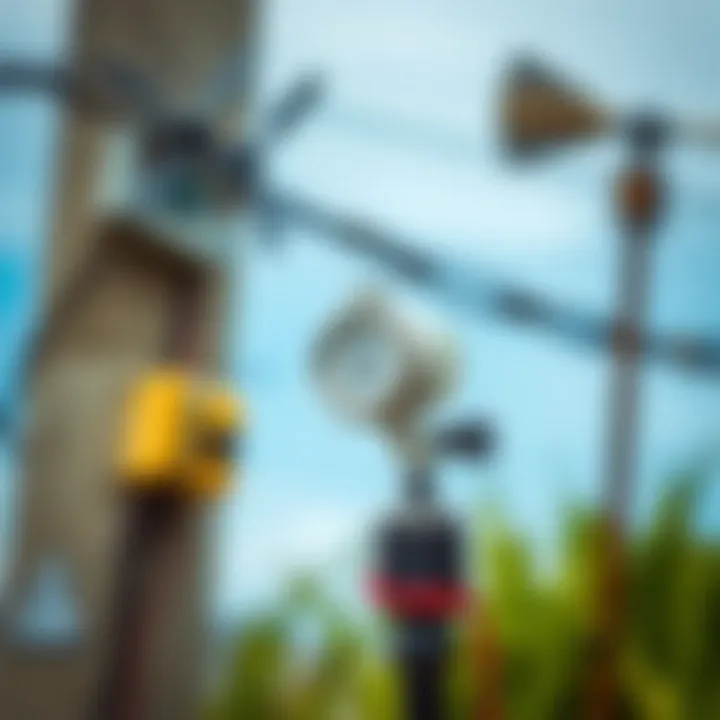
Historical Development of Anemometers
The journey of the anemometer traces back to ancient times. The device's roots can be found as far back as the 15th century, attributed to an Italian engineer named Leon Battista Alberti. His early designs were simple and functional, showcasing the human desire to understand and harness natural elements.
Fast forward to the 19th century, and we see further advancements. In 1846, an English engineer named William Thomson, later known as Lord Kelvin, developed a more precise device capable of accurately measuring wind speed. This was a turning point, as it laid the groundwork for the modern anemometers we rely on today.
As the years passed, technology took leaps and bounds, driving further innovation. Today’s anemometers are a blend of mechanical components and sophisticated electronics. They range from simple cup anemometers to complex digital versions that interface with smartphones and computers. This evolution reflects not just a technical progress but also the growing importance of accurate weather data across all disciplines, including surfing.
Ultimately, understanding the evolution of anemometers is essential to appreciate their value in modern applications. This appreciation is especially pertinent for surfers who rely on these tools for navigating their passion. The grass may seem greener elsewhere, but knowing how to read the wind makes one’s journey on the water that much richer.
Types of Anemometers
Anemometers come in various designs, each tailored to specific applications and environments. Understanding the different types is not just an academic exercise; it’s crucial for surfers aiming to elevate their performance and safety on the waves. The choice of anemometer can dramatically affect how accurately one can gauge wind conditions, which, in turn, influences surfing outcomes. Here’s a closer look at some common types of anemometers that surfers should consider.
Cup Anemometers
Cup anemometers are perhaps the most recognizable form in the anemometer family. Characterized by their three or four cups mounted on horizontal arms, they spin as wind flows through. The speed at which these cups rotate correlates directly with wind speed.
- Benefits: These devices are robust and require minimal maintenance, making them ideal for both casual surfers and professionals who travel to different surfing spots. Their design allows them to measure even low wind speeds accurately, making them versatile.
- Considerations: While excellent for general wind speed readings, they may not be the best for extreme wind conditions or very high-precision needs.
Vane Anemometers
A vane anemometer combines a rotating blade with a directional vane, usually resembling a small weather vane. This setup allows it to not only measure wind speed but also detect wind direction, which is invaluable for surfers trying to track subtle variations that can influence wave conditions.
- Benefits: The dual capability of measuring both speed and direction makes vane anemometers invaluable after all, it's often not just speed but direction that dictates a good surf session.
- Considerations: They can be more delicate than cup anemometers and may require careful handling to avoid damage. An ongoing calibration may be necessary for precise readings.
Hot Wire Anemometers
Hot wire anemometers feature a thin wire heated electrically. As wind passes over the wire, it cools down. The rate of cooling corresponds to the wind speed. While they are less common among surfers, they have specific applications in wind tunnel testing or detailed meteorological studies.
- Benefits: They can measure very low wind speeds accurately, providing detailed data that other models might miss.
- Considerations: These are often more sophisticated and sensitive to environmental variables like humidity and temperature changes. As such, they may not be the go-to for a quick assessment.
Pitot Tubes
Pitot tubes differ significantly from other types discussed here. Often used in aviation, they can also be utilized in coastal applications. They measure the dynamic pressure of the wind, allowing for the calculation of speed. This type can be mounted on various surfaces, including boats and surfboards, providing real-time data.
- Benefits: The precision in measurements provides an advantage for competitive surfers wanting to analyze performance variables closely.
- Considerations: They tend to be more complicated to set up and interpret than simpler models. Users need a solid understanding of fluid dynamics for effective use.
Digital Anemometers
Digital anemometers, incorporating advanced sensors, offer the convenience of digital displays for easy readability. They typically feature features such as data storage, averaging, and even Bluetooth connectivity to send data to mobile devices.
- Benefits: These devices can present a wealth of data at a glance and often include additional functionalities such as temperature measurements.
- Considerations: While convenient, they might rely on batteries or power sources, which could pose issues in remote locations.
Being well-versed in these various types of anemometers is paramount for surfers. With the right tools, it's possible to gain insights into wind and surf conditions, making each wave count.
How Anemometers Work
Understanding how anemometers operate is crucial in harnessing their full potential, especially for surfers looking to optimize their experience in the water. These devices not only measure wind speed but also provide essential insights into wind direction, data that’s invaluable for anyone serious about riding the waves. As such, a solid grasp of the principles and processes behind anemometers can empower surfers to make informed decisions about when and where to catch the best swells.
Principles of Measurement
At the heart of every anemometer lies the fundamental principle of measuring wind speed, which often revolves around forces acting on a structure. When wind moves past an anemometer, it exerts pressure on its moving parts. This interaction is usually translated into a measurable output indicative of wind speed.
For instance, a common type called the cup anemometer consists of three or four cups attached to horizontal arms. As the wind blows, it fills these cups, turning the arms around a vertical shaft. The faster the wind, the quicker the rotation. This speed can then be converted into an accurate reading of wind velocity.
Here’s an interesting note: Some newer digital anemometers incorporate sensors that rely on heated elements. They measure how much the heating element cools down as air flows over it. Such designs provide precise and rapid readings, essential for surfers needing timely information before hitting the waves.
Each design functions on unique principles, all shared by a common goal: accurately quantifying wind behavior. Whether determining potential surfing conditions or predicting changes in weather patterns, understanding how each anemometer measures wind physically impacts how surfers will experience the sport.
Calibration Methods
Calibration ensures that anemometers provide accurate wind measurements, enabling effective decision-making for surfers. This process ties back to trusting the data an anemometer presents. Calibration involves adjusting an anemometer to align its output with known standards. Typically, professionals use a few different methods to calibrate these devices.
- Field Calibration: This involves comparing the anemometer's readings against another calibrated device in real-world conditions. This method provides immediate feedback, perfect for checking the accuracy of portable models used by surfers in various locations.
- Environmental Conditions: When calibrating anemometers, manufacturers may also account for factors such as temperature, humidity, and pressure. These conditions can affect wind readings, so accounting for them means the calibration reflects a more realistic environment.
- Regular Calibration Checks: To maintain accuracy over time, regular calibration checks are necessary. It’s vital for surfers who often rely on these measurements. A device that's slacked in maintenance can lead to incorrect assessments of wind conditions on the water.
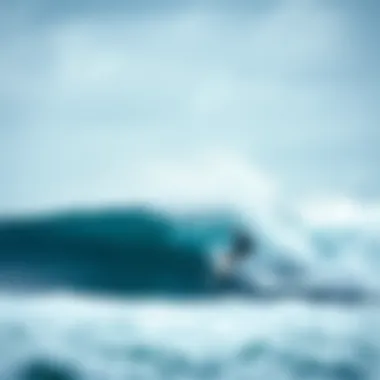
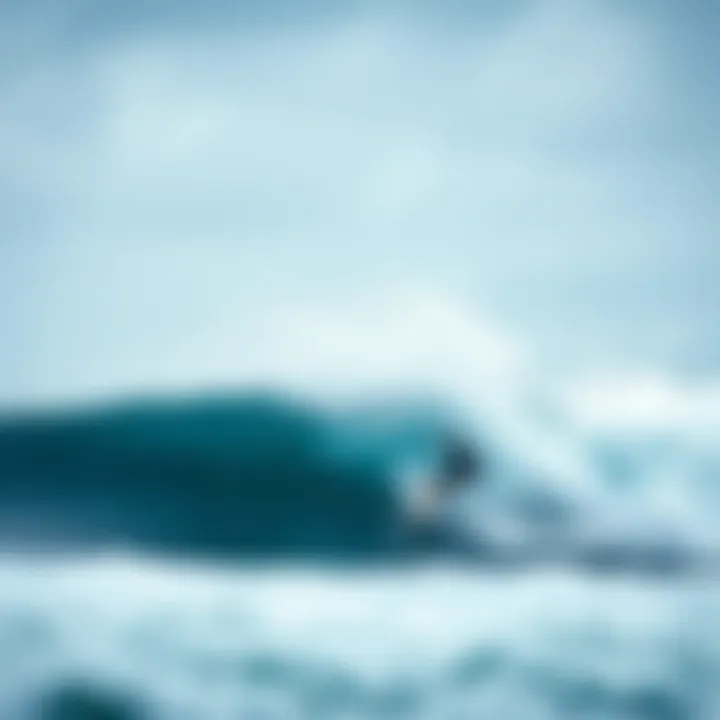
Winding down on calibration, it’s clear that this process is not just a one-and-done deal; it’s an ongoing commitment every surfer should consider if they rely heavily on these measurements for their aquatic pursuits.
In summary, knowing how anemometers work—particularly their measurement principles and methods of calibration—empowers surfers with the knowledge to make better-informed decisions, ultimately enhancing their time on the waves.
Applications of Anemometers in Surfing
When it comes to catching the perfect wave, having accurate information about wind conditions is not just beneficial; it's crucial. Anemometers serve as essential allies for surfers, offering insights that can make or break a day on the water. Their applications spread across several important aspects of the surfing experience. In this section, we’ll discuss how anemometers aid in surf forecasting, performance optimization, and safety precautions—elements that collectively enhance a surfer's journey.
Surf Forecasting
Understanding when and where to surf is vastly dependent on knowing wind conditions. Anemometers provide the data needed to forecast surf conditions, allowing surfers to track wind patterns that affect wave formation. The relationship between wind speed, direction, and wave size cannot be overstated. For instance:
- Offshore winds can create cleaner, more organized waves, which are ideal for riding.
- Onshore winds, however, can lead to choppy conditions that are less favorable for surfing.
By using an anemometer, surfers can make informed decisions about their surfing locations and times. Platforms like Surfline (www.surfline.com) and Magicseaweed (www.magicseaweed.com) often incorporate anemometer data into their forecasts, giving surfers real-time updates. This use of anemometer technology ensures that enthusiasts can hit the waves when conditions are at their best, enhancing not just performance but also the enjoyment of the sport.
Performance Optimization
Anemometers can also play a pivotal role in optimizing a surfer's performance. The readings they provide can inform surfers about the best conditions for their skill level and preferences.
For example, a novice surfer might prefer riding waves with gentle winds, while more experienced surfers often seek out challenging conditions that can be better understood through precise wind measurement. Here’s how anemometer data can enhance performance:
- Redefining Training Sessions: With real-time data, surfers can structure their training sessions around wind conditions that suit their practice goals.
- Equipment Adjustment: Winds impact how a board reacts. Those with an eye on their equipment can make adjustments based on the wind conditions foreseen via an anemometer.
Thus, performance optimization is intertwined with wind assessment, and anemometers provide that foundational knowledge needed to ride effectively.
Safety Precautions
Safety is the cornerstone of any sport, and surfing is no exception. Anemometers, by supplying data about wind conditions, become instrumental in ensuring a safer surfing experience. Before hitting the waves, consider these aspects influenced by wind measurements:
- Weather Changes: Sudden shifts in wind, like a strong gust, can signal incoming storms or hazardous conditions. Surfers equipped with anemometers can react quickly to change.
- Assessing Local Zones: Different surfing spots have distinct wind challenges due to geographical features. Knowing how wind behaves can guide surfers away from dangerous zones prone to rip tides or big swells.
"An understanding of the wind can turn peril into opportunity."
Anemometers and Coastal Dynamics
The interplay between anemometers and coastal dynamics is pivotal for surfers and anyone who engages with the ocean. Understanding how these tools influence and shape coastal environments is crucial. Knowledge of wind patterns, which anemometers provide, offers insights into wave formation and the behaviors of the surf.
Impact on Wave Formation
Waves are born from the wind, making understanding wind patterns essential for surfers. Anemometers capture data on wind speed and direction, which directly affects how waves shape up before they reach the shore. A more robust wind generates larger and more powerful waves, while gentle breezes create more mellow conditions.
Here are some aspects to consider:
- Wind Speed: Higher wind speeds typically yield more significant wave heights. Surfers need to know whether they’ll be facing a gentle swell or something that packs a punch.
- Wind Direction: Depending on the coastal geography, the wind direction can influence the quality of the waves. Onshore winds may flatten waves, while offshore winds can enhance wave shapes, creating ideal conditions for surfing.
Anemometers help predict the rhythm of the waves, giving surfers a heads-up. They collect real-time data, enabling individuals to time their outings with finesse. A surfer who understands the relation between wind and wave formation can make better decisions in the water, avoiding less favorable conditions that might lead to a disappointing day.
Understanding Local Winds
Each coastline has its own temperament shaped by local wind patterns. These winds play a crucial role in determining not just the waves but also overall surf conditions. Different areas might experience unique wind effects based on geographical features such as cliffs, bays, or reefs.
Understanding local winds is essential for surfers because:
- Microclimates: Depending on the time of year and local geography, certain areas might experience completely different wind patterns that can affect wave conditions drastically.
- Consistency: In some locales, wind patterns are consistent, presenting reliable surf days. Knowing when and how these winds shift can help surfers find the best times to paddle out.
Environmental Considerations
Effects of Wind Measurement on Surfing Areas
Wind is the unseen force that shapes our ocean waves and, ultimately, our surfing experiences. Anemometers serve as critical instruments that measure wind speed and direction, offering surfers invaluable information. The effects of accurate wind measurement can’t be overstated.
When wind data is collected in surf zones, it directly influences wave formation and surf conditions. For instance, sustained winds can create larger, more powerful swells. Conversely, light winds can yield choppy waters which aren’t ideal for riding. Understanding these dynamics helps surfers choose the right time and place to hit the waves.
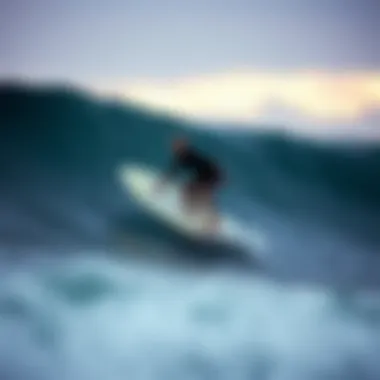
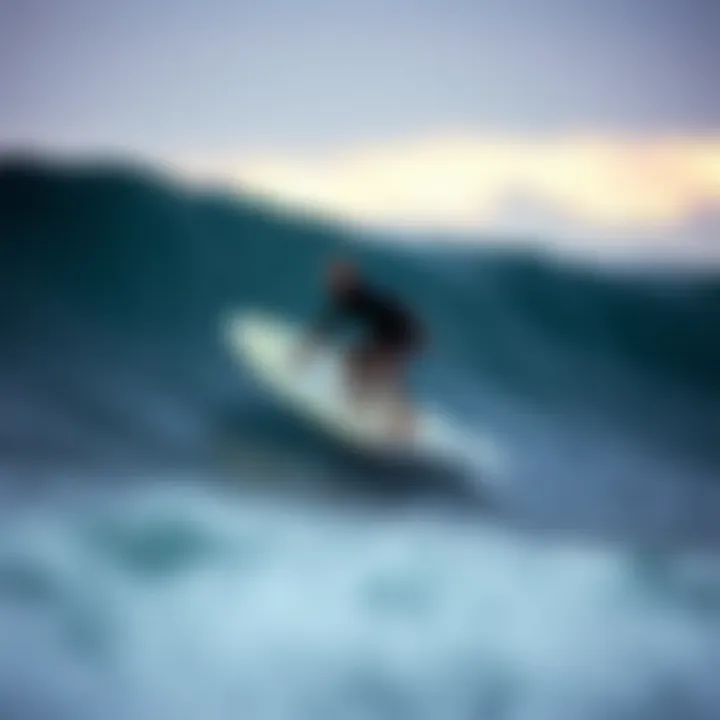
Moreover, local geography impacts wind patterns in ways that are particular to specific areas. Therefore, consistent monitoring via anemometers not only helps surfers prepare for their session but also ensures safety by allowing them to navigate changing conditions effectively. This real-time data can mean the difference between a thrilling ride and a dangerous situation.
Sustainable Practices in Anemometer Usage
As surfing continues to grow in popularity, the environmental footprint of surfing, including the tools we use, comes into sharper focus. Anemometers, while beneficial, must be used sustainably to minimize impact on coastal ecosystems.
Here are a few sustainable practices to consider:
- Energy-Efficient Models: Opting for solar-powered or low-energy anemometers can drastically reduce the energy footprint. This aligns with a commitment to protect our surfing spots from unnecessary strain.
- Regular Maintenance: Ensuring that equipment is calibrated and functioning properly not only improves accuracy but extends its lifespan, reducing waste.
- Environmental Monitoring: Anemometers can also serve a dual purpose. By integrating them into environmental monitoring systems, surfers can contribute valuable data on marine health and climate conditions.
- Educating Others: Sharing best practices and encouraging fellow surfers to adopt sustainable measures will enhance community awareness.
In the end, the goal is to keep our beaches pristine while enjoying the exhilarating sport we love. By responsibly utilizing anemometers and recognizing their environmental impact, surfers can ensure that future generations experience the same thrill we do today.
Choosing the Right Anemometer for Surfing
Choosing the right anemometer is crucial, especially for surfers who heavily rely on wind conditions to maximize their experience. The ability to measure wind speed and direction accurately ensures that surfers can make informed decisions, greatly impacting their safety and enjoyment. This section delves into the essential elements to consider when selecting the ideal anemometer, along with recommendations for various skill levels.
Factors to Consider
When in the market for an anemometer tailored for surfing, several key factors warrant attention:
- Accuracy: This is perhaps the most vital criterion. A precise reading helps surfers predict wave conditions accurately. Look for anemometers with a high degree of reliability, as they can make or break your surfing day.
- Portability: Surfing often involves traveling to various locations, sometimes off the beaten path. A lightweight and compact anemometer ensures that you'll always have it handy without burdening your gear.
- Ease of Use: For most surfers, the focus is on catching waves, not fiddling with complicated devices. Opt for models with intuitive interfaces—simple enough for anyone to grasp.
- Durability: Surfing exposes equipment to rugged environments. Anemometers must resist water and salt exposure, thus choosing robust models that stand the test of weather is a must.
- Wind Range: Different surf conditions call for different wind speeds. A useful anemometer should measure a broad range, so it adapts to varying conditions encountered in different surfing spots.
- Cost: Surfers come from varying financial backgrounds. Setting a budget and weighing the features against the price will help you pick the right model without breaking the bank.
Adhering to these factors will ensure a smart investment in your surfing ventures.
Recommendations for Different Skill Levels
Not every surfer has the same needs or experience. Therefore, it’s important to tailor choices to specific skill levels:
- Beginner Surfers: If you're just starting out, consider an affordable digital anemometer like the Kestrel 2000. This model is easy to operate and offers essential measurements without overwhelming you with features.
- Intermediate Surfers: Those with a bit more experience might appreciate the Extech 45158 Vane Anemometer. It strikes a balance between price and functionality, providing a degree of sophistication without being overly complicated.
- Advanced Surfers: For seasoned surfers looking to enhance their performance, the Kestrel 5500 is a top-tier option. It includes advanced features such as Bluetooth connectivity, allowing you to sync data to your smartphone for quick analysis.
"The right tools can mean the difference between a mediocre day on the water and an outstanding surf session."
Finding an anemometer that fits your skill level while meeting the aforementioned considerations will enhance your surfing experience significantly, leading to better waves and greater fulfillment on the water.
Future Developments in Anemometer Technology
In the ever-evolving world of surfing, the significance of anemometers cannot be overstated. They serve as the backbone of wind measurement, directly influencing the way surfers engage with waves. Understanding future developments in this field provides valuable insights for both enthusiasts and professionals. Embracing these advancements ensures surfers can harness the full potential of their sport while making informed decisions.
Innovation Trends
The landscape for anemometer technology is evolving rapidly. Emerging innovations are pushing the boundaries of what these devices can achieve. Here are some notable trends shaping the future:
- Smart Sensors: The integration of sensor technology with machine learning algorithms is paving the way for smarter anemometers. These devices will not only measure wind speed but will also analyze historical data, offering predictive insights about changing conditions. Imagine a device that could assess the optimal time for hitting the surf based on wind patterns.
- Miniaturization: As technology advances, so does the drive for smaller devices. Future anemometers will be more portable, allowing surfers to carry them without the added bulk. This miniaturization will enhance accessibility, enabling more surfers to utilize these tools on-the-go.
- Durability Enhancements: Anemometers must withstand the harsh coastal environments. Future designs are focusing on materials that resist corrosion from saltwater and UV exposure while also being able to endure strong winds.
- Hybrid Technologies: Combining various technologies, such as combining anemometers with real-time wave sensors, could enhance measurements and give surfers critical insights into both wind and wave dynamics, enabling a more comprehensive understanding of the environment.
Integration with Digital Platforms
The future of anemometer technology lies significantly in its ability to intertwine seamlessly with digital platforms. This integration offers numerous benefits that can enhance the surfing experience:
- Cloud Connectivity: Future anemometers can link to cloud services, allowing users to access real-time data from multiple locations. Surfers can see updated wind conditions from everywhere, making it easier to choose the best surfing spots.
- Mobile Applications: Imagine an app that lets surfers track and analyze wind trends, wave heights, and even share conditions with fellow surfers. This type of technology can convert raw data into user-friendly formats, showing clear trends and forecasts.
- Community Feedback: The integration with platforms such as surfing forums or social media sites will enable sharing and discussing conditions and experiences with other surfers. Engaging with a community can lead to real-time insights that a solitary anemometer cannot offer.
End
As we reach the concluding section of our exploration into anemometers, it becomes clear how vital these instruments are for surfers. Understanding the nuances of wind measurement can directly correlate with one’s surfing prowess and overall experience on the waves. Anemometers stand as beacons of knowledge, informing surfers about optimal conditions and enhancing the safety of every surf session.
Summarizing the Importance of Anemometers in Surfing
To put it plainly, anemometers are not just techy gadgets for wind enthusiasts; they hold immense significance for surfers looking to optimize their sessions. By providing real-time readings of wind speed and direction, these devices guide surfers to the right spots where waves are most favorable. Accurate wind readings can mean the difference between a thrilling ride on powerful swells and a disappointing day of choppy water.
Moreover, surfers equipped with anemometers foster a deeper connection with their environment. They develop a better understanding of local wave patterns and weather phenomena. For instance, when wind is blowing offshore, it often means cleaner waves suitable for riding. In contrast, when the wind is onshore, it can create a more turbulent surf that may not be ideal. This nuanced awareness not only enhances performance but also cultivates a respect for the ocean's unpredictability.
Encouraging Responsible Usage
While the advancements in anemometer technology offer myriad benefits, it is essential for surfers to use these tools responsibly. Being informed can sometimes lead to overconfidence. It’s crucial to remember that numbers on a screen cannot replace experience and intuition that come with time spent in the ocean. Surfers should embrace the data while also remaining attuned to their instincts.
Furthermore, as weather patterns evolve due to climate change, consistent usage of anemometers can help in tracking changes over time. Surfers have a unique responsibility to advocate for sustainable practices in their communities. This may involve sharing information about how to treat both the ocean and its winds with respect.
Ultimately, even with sophisticated devices in hand, nothing competes with the basic knowledge gained through years of experience in the surf. Utilizing anemometers should enhance and complement this experience, not complicate or overshadow it. By marrying technology with the rich traditions of surfing, individuals walk a path toward more informed and meaningful connections with the ocean.
"Understanding the environment is vital for any surfer; anemometers bridge the gap between instinct and data."
In closing, anemometers are invaluable allies in the quest for the perfect wave, guiding surfers toward informed decisions that enhance their enjoyment while promoting a mindful relationship with nature.















